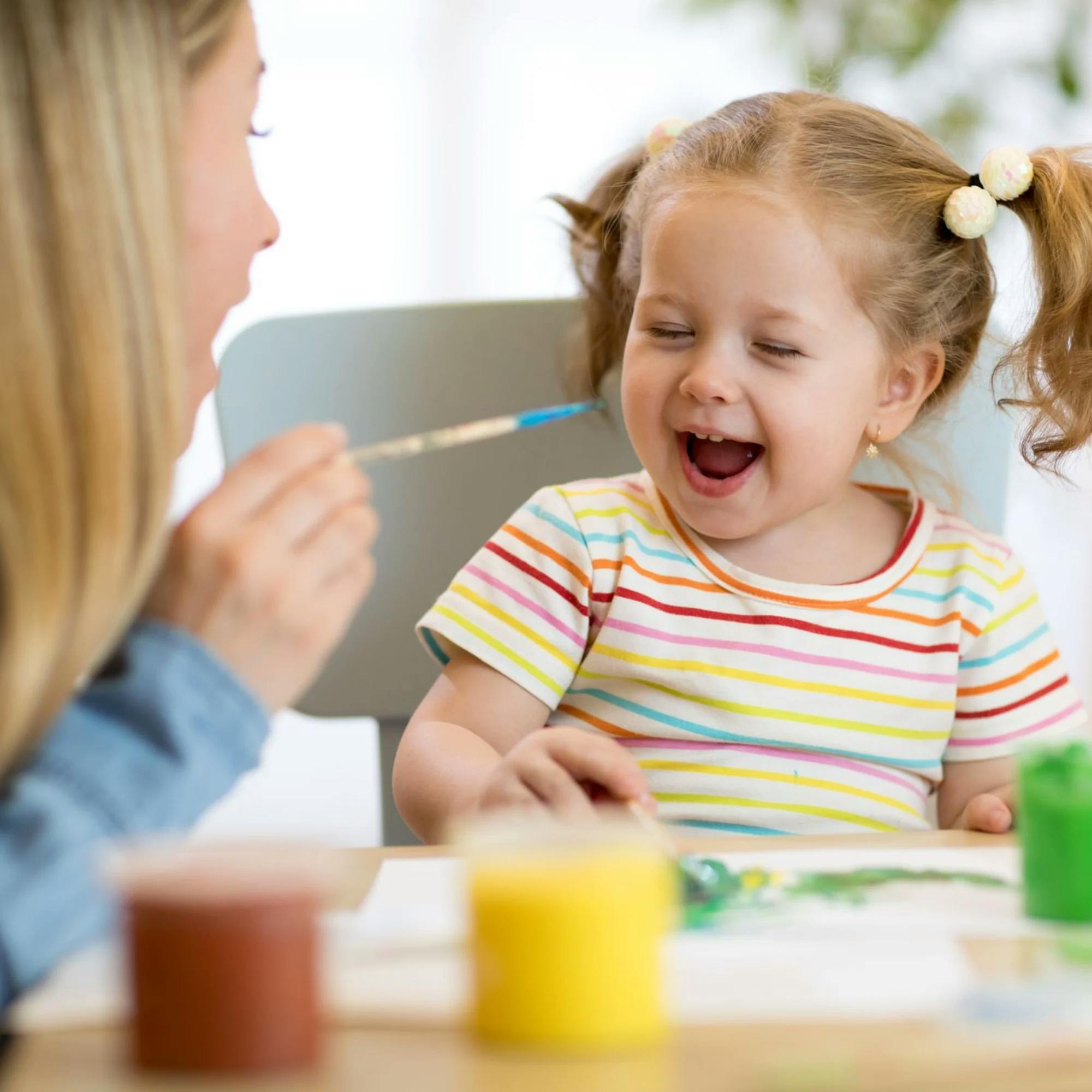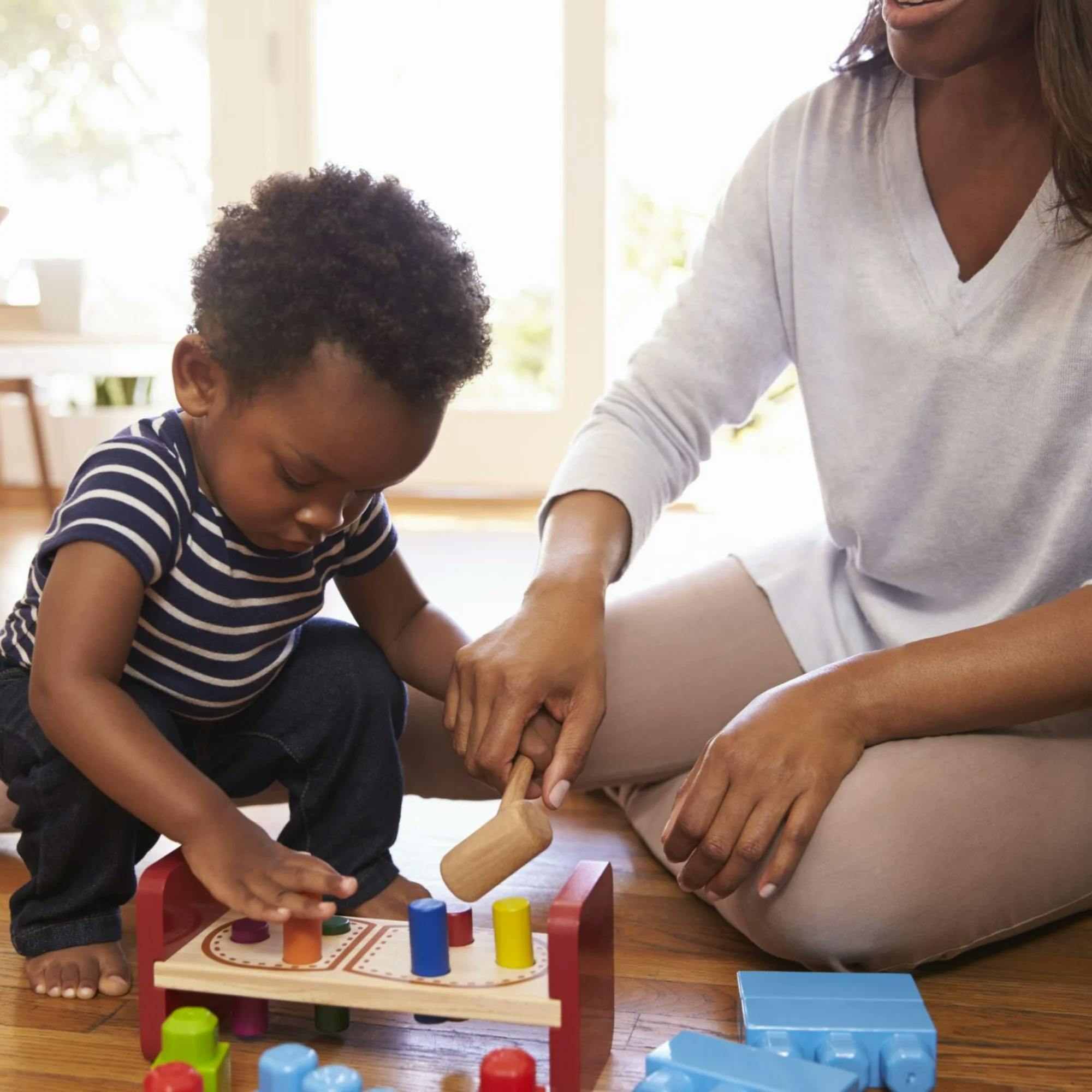
Holiday-Themed Speech Therapy Activities to Practice at Home
 Leanne Sherred, M.S., CCC-SLP
Leanne Sherred, M.S., CCC-SLP
No matter what you celebrate, the holidays are a time for family togetherness, belt-loosening good food, and some much-deserved relaxation.
The holidays are also a wonderful opportunity to try some fun speech therapy practice at home. I always stress to parents and caregivers that speech therapy doesn’t require special materials, tools, or games. In fact, one of the best ways to improve your child’s communication skills is simply by incorporating meaningful play and practice into their daily lives.


For families who are lucky enough to take time off during the holidays, this is a great chance to engage your child in speech and language practice--regardless of whether they’re currently seeing a speech therapist. Listed below are some of my favorite holiday-themed activities. The best part is that you’re probably already doing many of them! This article will simply help you be more purposeful in helping your child develop important speech and language skills.
Holiday-themed vocabulary words
Your child is more likely to hear certain words this time of year. So why not help them learn and start using them!?
Expanding your child’s vocabulary doesn’t require any fancy materials. Gone are the days of boring flashcard drills--with wandering eyes and glazed looks soon to follow! Instead, you can simply model holiday vocabulary words in your everyday conversations, with plenty of repetition and clear pronunciation.
Model holiday vocabulary words in your everyday conversations, with plenty of repetition and clear pronunciation.
For example, if you’re working on the word “tree," you could say, “I’m decorating the tree. The tree is so pretty. See the pretty tree?” If you’re playing in the snow, try saying, “See the snow? The snow is falling. It’s fun to play in the snow!”
Make sure to emphasize the words “tree” and “snow” and use them repeatedly throughout your day. Children learn best when they hear and imitate the words that are spoken in their everyday environment. Here are some examples of fun holiday words to start practice today:
Light
Season
Snow
Ornament
Present
Tree
Star
Sparkly
Bright
Winter
Candle
Bell
Cookie
Candy
Following directions
You’re probably thinking: the greatest gift my child can give me is to follow directions! I can relate. However, following directions isn’t just key to your own good spirits and holiday cheer, it’s actually a vital skill that will last children a lifetime. They don’t just need to follow directions at home; they also need to cooperatively listen to their family members, teachers, and other adults they know and trust.
Following directions can be challenging for some children. Not because they’re trying to be disobedient, but because it can be a rather complex skill to learn. It requires understanding vocabulary, grasping the meaning of what someone is saying, having the working memory to remember what was asked, and adequate attention and focus to carry out the direction.
Working on following directions can be done with all kinds of holiday activities, but let’s focus on a popular one: decorating a tree. Here are a few types of directions you can practice with your child.
One-step directions: If your child is younger, or has a hard time with directions, start with simple, one-step directions. This can be as easy as saying:
Come here.
Put up the light.
Give me the star.
Bring me the ornament.
If your child has already mastered one-step directions, below are some variations of two-step directions that increase the challenge.
Sequential directions: These directions have multiple steps and follow the “first… then” pattern. Your child has to do two or more actions at the same time. Examples include:
First, hang up the blue lights. Then, hang up the green lights.
First, bring me a yellow ornament. Then, put the ornament on the tree.
First, grab the presents. Then, put them under the tree.
Before and after directions: These are similar to sequential directions, but require that your child does something before or after they perform another action. Try switching the order of these actions to mix things up. These can be harder for children to master, but they're also necessary--we use them in conversation all the time. Examples include:
Before you grab the gifts, make sure they’re wrapped.
Put the ornament on the tree after you take it out of the box.
Spatial directions: Try practicing directions that include spatial words, such as above, below, under, over, beside, near, and far.
Put the star above the tree.
Put the presents under the tree.
Set the milk beside the cookies.
Songs and poems
Many children have trouble accurately producing different speech sounds. Some common examples are the sounds /s/, /z/, /r/, /l/, and /sh/. If your child is struggling to articulate certain sounds or words, try to recite passages from fun holiday songs. Make sure to pay attention to their pronunciation, and have your child really focus on those target sounds. Using /s/ as an example, here are a few songs you could practice.
“I’m a little sssssssnowman, short and fat. Here is my sssssscarf and here is my hat…”
“... and all through the houssssse, not a creature was ssssstirring, not even a moussssse.”
“... and when it’ssssss dry and ready, a dreidel I shall play.”


Holiday cooking and baking
While having a live-in chef may be a faraway fantasy, your child can surely help! Invite them into the process and incorporate new vocabulary, verbalizations, and direction practice as you cook up a 5-star meal. Plus, your child may be more willing to participate if you dangle a tasty treat for them as a reward.
Use cooking or baking as an opportunity to point out new vocabulary, such as ingredients, utensils, or techniques.
Use cooking or baking as an opportunity to point out new vocabulary, such as ingredients, utensils, or techniques. “This is a pot. And in the pot goes water!” You can also practice colors, sizes, and adjectives. “These sprinkles are so many colors! I see a green one, a yellow one, a blue one, and what color is that?” And finally, this is another great opportunity to practice their direction-taking skills. “First put in the salt, and then stir it together” or “Before you put in the chocolate chips, add the flour.”


Reading holiday-themed books
The benefits of reading regularly to your child can’t be overstated. Reading together improves their comprehension, literacy skills, vocabulary, and so many other critical skills for your child’s developing mind.
With school and work schedules, errands, and a busy household, finding quality time with your child isn't always easy. However, the holidays are a perfect time to relax with a book and rekindle their love for reading.


While there is an endless selection of fantastic reading material out there, here are a few of my favorite holiday books to look for at the library or bookstore:
Bear Stays Up for Christmas by Karma Wilson
The Night Before Hanukkah by Natasha Wing
The 12 Sleighs of Christmas by Sherri Duskey Rinker
Little Blue Truck’s Christmas by Alice Schertle
There Was an Old Lady Who Swallowed a Bell by Lucille Colandro
Dream Snow by Eric Carle
How Expressable Can Help
Concerned your child isn't reaching age-expected milestones? Looking for communication support from a professional? Expressable is a national online speech therapy practice serving children and adults. We treat all major areas of communication and feeding, offer flexible hours including evenings and weekends, and accept most major health insurance plans. We’re proud to have earned more than 3,000 5-star reviews from our clients (4.9/5 average).
Our therapy model is centered on parent and caregiver involvement. Research proves that empowering caregivers to participate in their loved one’s therapy leads to better outcomes. That’s why we combine live, 1-on-1 speech therapy with personalized education and home practice activities for faster progress.
Communication is more than words. It’s how we share how we feel and show who we are. We’re here to help you or your child do just that.








